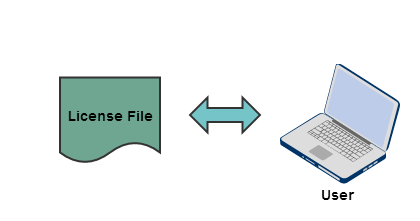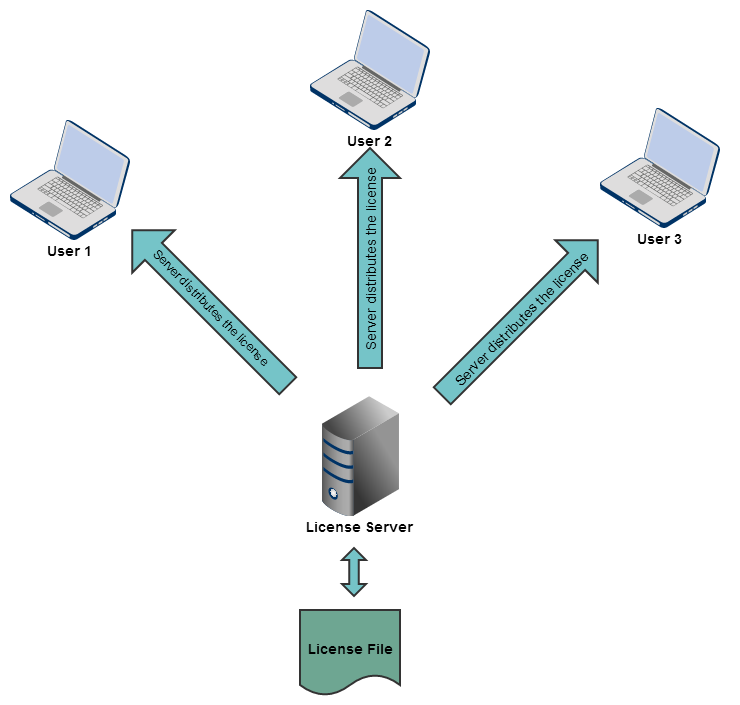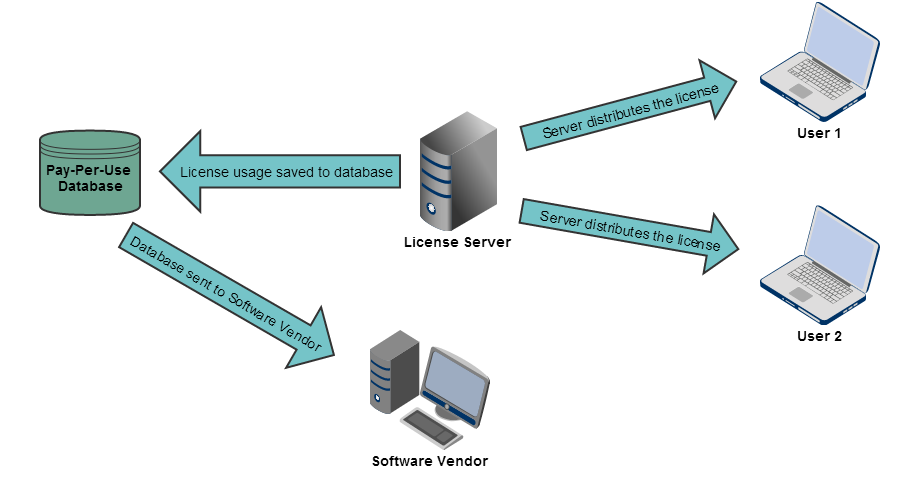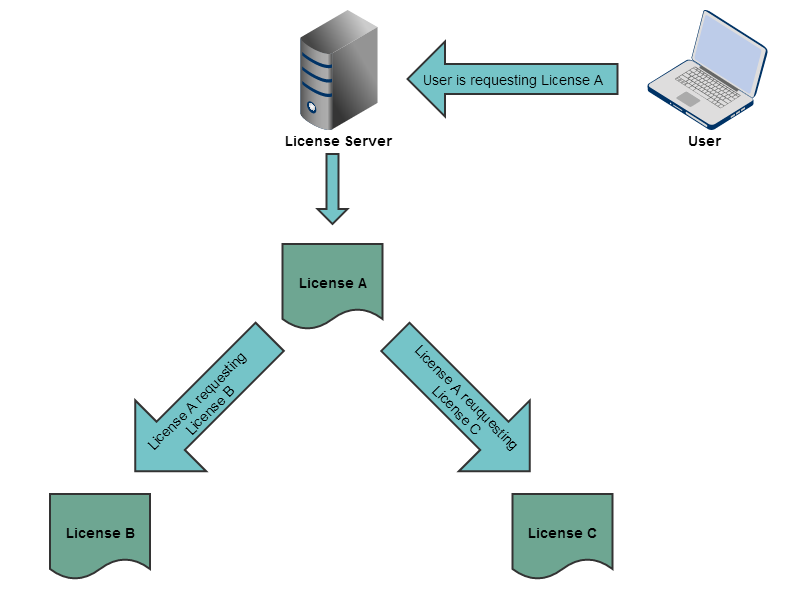Establish a license policy that suits your business. LM-X is configurable for a large variety of different license schemes, which usually consists of one or more features in your software. If your application has more than one differently licensed module, the license file will contain multiple features.
To establish a license policy, create one or more license template files, which contain a LICENSEFILE tag that encloses one or more FEATURE tags. Each FEATURE tag consists of a number of SETTING tags that specify the feature's individual attributes and define it as one of the following:
Node-locked licenses
Designed for individual users/machines, node-locked licenses licenses allow a single instance of an application to run on a specified host. The following diagram shows an example of a node-locked license.
Floating licenses
Floating licenses allow an application to be used on a network. The example below shows an example of a floating license.
. LM-X lets you determine which HostID type to use to specify the machine you want to lock your licensed application to. For example, you can use an Ethernet card, BIOS, Hasp HL dongle or harddisk HostID.
Floating/network licenses
Floating/network licenses allow multiple users to install and use a limited number of licenses on multiple machines.
Example
Suppose you have 10 workstations where Program X is used. In most cases there are fewer than 10 users concurrently using the application. Instead of purchasing 10 licenses, you can only purchase the number of floating licenses to support the number of concurrent users. Some highlights of the benefits of floating licenses include centralized license management and maximum utilization of each license.
Determining whether to use node-locked or floating licenses depends on your end user's needs and how you prefer to distribute your software.
Trial licenses
Trial licenses allow users to evaluate your software before purchase.
Time-limited licenses
Time-limited licenses are used for restricting usage periods and allowing for subscription-based licensing models.
Trial licenses
...
Pay-per use licenses
Pay-per-use licenses let you are used for back-bill customers after using a licensebilling customers based on their actual usage.
Token-based
...
Token-based /product suite licenses are licensing is used for letting you bundle bundling products in diverse ways.
Some example XML license templates corresponding to these basic licensing policies are given in the following section, and you can find a number of sample licenses in the /examples/licenses directory of the LM-X distribution. For complete details about each of these license models and the settings you can use within features, see the LM-X Developers Guide.
You can easily read existing templates and generate licenses from them using the LM-X License Generator, xmllicgen (located in the platform-specific directory). The XML license template is an input for the LM-X License Generator. Only ASCII file format is supported. The xmllicgen tool does not work with UTF-8 or any other Unicode-based encoding.
You can use xmllicgen to create licenses manually or automatically. You can integrate automated license generation into business applications; for example, the license generator can be called by a web service to create licenses based on web storefront requests. The XML format of license file templates facilitates integration with your internal systems for automatic license production (issuing) of every possible licensing model (trial, fixed date, activation date, etc.).
To generate a license, use the following command, with the relative paths for your system:
- On Windows, type: xmllicgen.exe -output example.lic ..\examples\licenses\nodelocked.xml
- On Unix, type: ./xmllicgen -output example.lic ../examples/licenses/nodelocked.xml
, such as creating license pools and product suites.
Note: If you are using the evaluation version of LM-X, vendor is "demo."
.








